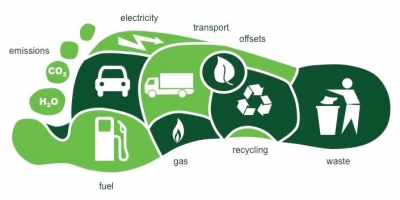
When we speak about increasing forest cover, the main reason for doing so is perhaps that it takes in carbon, and so will help in tackling climate change. But, that’s not the only thing forests do. Their benefits are interconnected in a way it can help humankind as a whole live well. Let’s take a closer look at some of the ways in which they help us
Cooling effect
Keeping tropical forests standing provides a 50% greater impact on lowering global temperatures than can be accounted for simply through their carbon-absorbing abilities, according to a new report by the World Resources Institute (WRI), a think tank.
Stands of trees, for instance, provide “evapotranspiration” – the process by which water is released from the soil into the atmosphere to fall as rain. Such additional cooling impacts must be integrated into governments climate policies to fully reflect what forests do for the planet, the report said.
Food and water security
Forests help to maintain stable rainfall patterns and local temperatures, which are vital for food and water security, according to the WRI report.
The Brazilian Amazon, for example, the report said, helps to maintain vital rainfall in several other countries, affecting agricultural production as far as Argentina. As deforestation turns parts of the world’s largest tropical rainforest into dry savannah, scientists are concerned that the Amazon is edging towards a tipping point beyond which it might never recover.
A buffer against natural disasters
Another benefit that forests provide is their ability to act as a buffer against natural disasters, which have become increasingly common due to climate change. Tree canopies can intercept rainfall and slow it down in a storm, allowing up to 30% of the water to evaporate into the atmosphere without reaching the ground, according to Britain’s Woodland Trust charity. In fact, some cities are using urban forests to become more resilient to flooding, as trees provide more permeable land to absorb rainwater.
Also, across the world’s equatorial regions, mangrove forests not only store significant carbon but provide a defence against coastal erosion and storm surges
Global biodiversity
Another vital contribution of forests is their impact on biodiversity, with such ecosystems home to more than half of the world’s land-based animal and plant species. As well as protecting nature, forests can provide a range of benefits to people, from forest foods to medicines. Especially in tropical regions, deforestation has been linked to increased outbreaks of infectious diseases, in particularly as animals come into closer contact with people. According to a recent analysis by the World Wildlife Fund (WWF), the world’s wildlife populations have declined by more than two-thirds since 1970, with deforestation a major driver.
Sustainable living
Deforestation leads directly to increases in local temperatures, exposing people and crops to heat stress, WRI said.
These local temperature extremes are a particular threat in the tropics for small-scale farmers, agricultural workers, indigenous people, and other local communities. Indigenous communities in particular rely on forests for their way of life. Research shows that they are also the best people to conserve these areas, leading to calls to put more in the hands of frontline communities.
DID YOU KNOW?
• Forests are the largest carbon sinks on land – they remove about 7.6 billion metric tonnes of CO2 each year from the atmosphere.
• In the Amazon, more than 10,000 species are at risk of extinction due to the clearing of rainforest for uses such as cattle ranching and soy farming.
• In the Amazon basin, a 2021 report by the U.N.’s Food and Agriculture Organisation (FAO) showed that deforestation rates are up to 50% lower in indigenous peoples’ forest lands than in other areas.
Picture Credit : Google





